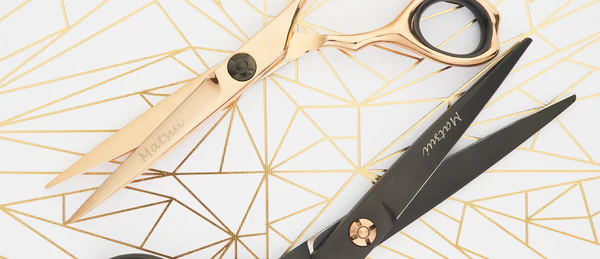Hairdressing is an artistic endeavor that calls for both originality and accuracy. Having a good pair of sharp hair-cutting scissors is crucial, whether you’re a professional hairdresser or just love trimming your hair. Beyond the obvious, the science of scissors’ sharpness delves into the complex worlds of metallurgy, mechanics, and upkeep. We’ll examine the intriguing science behind maintaining hair-cutting scissors to make sure they stay sharp and dependable in this complete guide.
How do cutting Scissors Work?
The fundamental design of hair-cutting scissors must be understood before we delve into the science of sharpness. These scissors are made specifically to cut hair neatly and uniformly. The following are the main elements of hair-cutting scissors:
Blades
Hair-cutting scissors normally have two blades, one that is fixed and the other that is mobile. The handles are attached to the movable blade, which can be opened and closed to cut.
Features
Hair-cutting scissors feature two edges on their blades: a cutting edge and a beveled edge. The beveled edge offers stability and support while cutting, whilst the cutting edge is the sharp edge that cuts the hair.
Handles
Hair-cutting scissors’ handles are used as grips for the user’s fingers. To accommodate various hand sizes and cutting methods, they can be made in a variety of shapes and sizes.
Tang
The metal piece that runs from the handle to the pivot point is referred to as the tang. It balances the scissors and adds to their overall toughness and stability.
Central Hinge
The central hinge connecting the two blades is known as the pivot point. It enables the smooth opening and closing of the scissors, which produces the cutting action.
After looking at the parts, let’s analyze the science of sharpness to learn how to preserve this important characteristic of hair-cutting scissors.
A Study of Sharpness
The performance of hair-cutting scissors is greatly influenced by their sharpness. Uneven cuts, hair damage, and a bad experience for both the stylist and the customer can all be caused by dull scissors. Precision in mechanical design, geometry, and metallurgy are all part of the science of sharpness. Here is a closer examination of each of these features:
Metalworking
The sharpness and longevity of hair-cutting scissors are significantly influenced by metallurgy. Achieving the necessary level of sharpness requires careful consideration of both the materials chosen and the heat treatment procedure. Several important metallurgical factors are listed below:
Steel, Stainless
Stainless steel is frequently used to create high-quality hair-cutting scissors. This substance was selected due to its durability and resistance to corrosion. The scissors can keep their edge for a long time thanks to stainless steel.
Rockwell Hardness
Metal hardness is gauged using the Rockwell hardness scale. To ensure that they can keep a sharp edge while enduring usage, hair-cutting scissors are often hardened to a specified Rockwell hardness level. Professional hair-cutting scissors typically have a hardness of between 55 and 59 HRC (on the Rockwell C scale).
Composition of Alloys
The sharpness and durability of the scissors might be affected by the stainless steel’s unique alloy makeup. Different alloys have different characteristics, such as wear and corrosion resistance.
Geometry
Another important factor in blade sharpness is the geometry of the blades. How well the scissors cut hair depends on the blade alignment, the angle and form of the cutting edge, and other factors. These geometrical considerations are listed below:
Cutting Edge Angle
To ensure clean cuts, the cutting edge of the scissors should have a proper angle. Scissors used for cutting hair typically have an angle between 25 and 40 degrees. Depending on the intended function, such as bulk removal or precise cutting, the angle can change.
Bevelled Edge
The blades’ beveled edges offer support and stability when cutting. It helps to avoid hair slipping out of the scissors before they are used to cut it. To guarantee successful cutting, the beveled edge should match the cutting edge.
Alignment of the Blade
For the blades to stay sharp, proper alignment is crucial. Misalignment can result in uneven cutting and early blade wear. Blade alignment is checked and adjusted as part of routine maintenance.
Refined Mechanical
Sharpness is greatly influenced by mechanical factors like the pivot point and overall design of the scissors. The following illustrates how mechanical accuracy affects how well hair-cutting scissors work:
Lubrication of Pivot Points
The blades can move easily because of the pivot point. The pivot point needs to be lubricated regularly to ensure that the scissors open and close smoothly. Friction causes the blades to get dull over time.
Tension Modification
The degree of resistance encountered when opening and shutting the blades is referred to as the tension of the scissors. The right tension setting is necessary for the best cutting performance. Uneven cuts might result from scissor grips that are too tight or too slack.
Sturdiness
The lifespan of the scissors is influenced by their general design and manufacturing quality. High-quality scissors are made to resist the stresses of regular usage, keeping their usefulness and sharpness over time.
Conclusion
It takes both art and science to keep hair-cutting scissors sharp. For individuals who depend on these precision instruments, understanding the metallurgical, geometrical, and mechanical factors that affect sharpness is crucial. You can keep your scissors reliable and sharp so that you may cut hair precisely and beautifully with ease by adhering to the right maintenance and care procedures. The science of sharpness is an important component of the world of hair-cutting scissors, regardless of whether you’re a professional stylist or someone who appreciates looking well-groomed.
